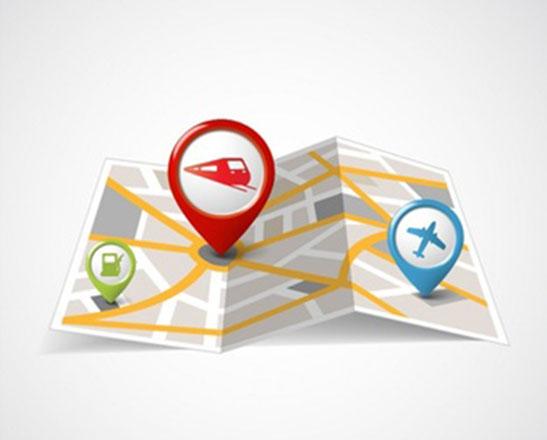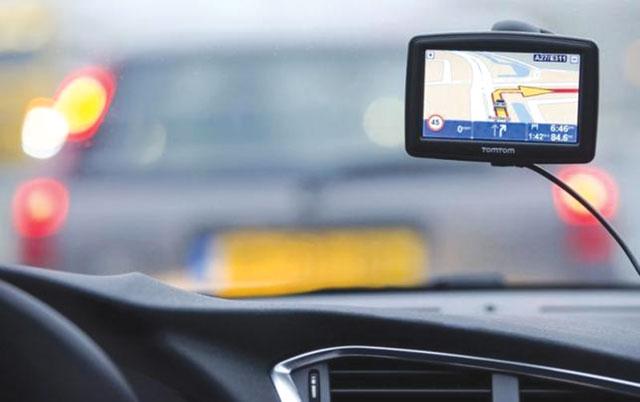You are here
Why people still love their paper maps
By USA Today (TNS) - Mar 07,2020 - Last updated at Mar 07,2020

Photo courtesy of freepik.com
Even if everything navigation is pointing in the direction of GPS, you’ll never tear some folks away from their paper maps.
In Northern New Jersey, Stephanie Kivett Ohnegian keeps an atlas in her car because “there are places where the GPS signal doesn’t work” or “the routing is ridiculous”.
Out in Portland, Oregon, Kimberly Davis has paper maps in her earthquake “go bag” – just in case.
And in Newport Beach, California, Christine McCullough has another practical reason for keeping the once-ubiquitous thick, spiral-bound Thomas Guides in her car. As the kids prepare for their driving tests, her edict is “no phones.”
Few folks would dismiss the fact that GPS, for all its imperfections, can be a godsend when we’ve lost our way — assuming it wasn’t GPS that sent us wildly off course in the first place.
Same goes for Apple Maps, Google Maps and Waze.
And those apps are constantly evolving, too.
Apple just delivered a redesigned Apple Maps experience with what the company insists is faster and more accurate navigation, and more comprehensive views of roads, buildings, parks, airports, malls and so on.
Apple unveiled a new Look Around feature that is similar to Google’s Street View, leveraging high-resolution photographs to let you see what major cities look like.
As part of its 15th birthday, Google is rolling out a refreshed look of Google Maps on iOS and Android devices, and adding such new features as the ability for some transit riders to determine whether their bus or train is likely to be on the warmer or colder side.
As digital navigation tools continue to become regular fixtures in getting us to where we’re going, Google Maps is also looking at having an impact on establishing where we are. Google CEO Sundar Pichai blogged that, “one of the next frontiers for Maps will be to help the billions of people who live without a physical address get a digital one”, using latitude and longitude coordinates rather than a street address, which he says would let more folks access things like banking and emergency services, receive personal mail and deliveries, and help others find and patronise their businesses.
San Francisco market researcher Grand View Research estimated the global digital map market to be worth $5.6 billion in 2018. The firm expects the market to continue to expand at a compounded annual growth rate of 12.1 per cent through 2025.
Where does that leave printed maps?
Paper maps still sell
“Do they still make, even sell, paper maps?” That question from retired New York marketing executive Michael Lissauer is emblematic of our daily reliance on digital navigation. “Other than in a history class, Europe before World War II, who needs a paper map?”
It may surprise Lissauer and others that the answer to the question is yes. They’re actually on the rise. US sales of print maps and road atlases had have had a five-year compound annual growth rate of 10 per cent, according to the NPD BookScan. In 2019, year-over-year sales climbed 7 per cent.
Tony Rodono has certainly heard it all before. He owns and runs The Map Shop. “We’ve had a retail location in Charlotte, North Carolina, for about 30 years, and every day we get somebody walking in saying, ‘How in the world can you stay in business?’”
Not only is The Map Shop still in business but it is also moving to a bigger facility, partly to manufacture three-dimensional “raised relief maps” that are vacuum formed over a mould to help people get a better representation of an area’s topography.
A few of The Map Shop’s older generation customers are sceptical of GPS, he finds. “They have a flip phone that’s tucked away with their map in their glove box for emergencies,” he says. But he’s seeing fewer and fewer customers who fit that description.
Members of AAA can still walk into a local branch and request a TripTik, the spiral-bound notebooks filled with fold-out maps tracking the route to their final destination. An AAA agent would highlight the route with a marker and point out sightseeing spots, restaurants, perhaps places to spend the night. You’d typically walk out with tour books as well.
As a signpost of the digital age, people nowadays can order TripTiks, which first surfaced in 1937, online or through the AAA app and create a digital version.
Dave Arland still frequents aAAA branch before a big car trip. The Indiana public relations executive insists, “Nothing beats the high-resolution printed map! Plus printed maps don’t have an attitude like Siri, Google, or others!”
“I am a paper girl all the way,” says Cindi Gildard, a bookkeeper at Chase Leavitt in Portland, Maine. “I’m not a navigator. I wouldn’t know how to use a GPS if there was one in my vehicle.”
Instead, Gildard relies on the “awesome” “Maine Atlas and Gazetteer”, which she says shows “old little dirt roads and where bridges were washed out”. The Gazetteer uses dotted lines, she adds, to indicate areas in the backcountry where you need four-wheel drive.
No signal? No problem. No battery required
For her part, Kendra Ensor, the vice president of marketing at Rand McNally in Chicago, says about five years ago the company started to see an uptick in Road Atlas sales. “After all, a printed atlas doesn’t require batteries or a satellite or cell signal,” she says.
Fear of those dead batteries or spotty coverage is a key reason cited by many of the people who responded to USA Today on social media about why they still use paper maps.
“When we were in Nebraska last year with all the flooding, a paper map would have been helpful when both Apple and Google Maps told us to go down a flooded road,” says Barb Gonzalez, a travel photographer and writer based in Bend, Oregon.
There’s a host of other reasons for printed maps, though, from carefully curated collections for historical or scholarly purposes to artistic displays to the accidental stockpile from recent travels.
David Rumsey’s collection of over 150,000 maps is housed at Stanford University. Over 30 years, he amassed atlases, wall maps, globes, school geographies, pocket maps, maritime charts dating from about 1550.
For community planners, real estate agents and engineers, for instance, paper maps are just tools of the trade.
“Suddenly we have these driving directions in our pockets, and everybody seems to have forgotten that all these other maps exist, even though they clearly use them on a regular basis,” says Daniel Huffman, a cartographer and an honorary fellow at the University of Wisconsin in Madison. “I don’t think there is much of a separate case to be made for paper maps versus paper newspapers or paper books.”
Privacy: Paper maps
tell no tales
To the extent that people fret about privacy, paper maps also won’t track you.
Now, Apple emphasised privacy as part of its rollout for the latest iteration of Apple Maps: No sign-on is required, for example, and data collected by Maps while using the app, including search terms, navigation routing, and traffic information, is hidden behind random identifiers.
When you navigate somewhere using Google Maps, your every movement is often tracked, where it shows up inside Google’s somewhat controversial opt-in Location History feature. Those seeking more privacy can enable Incognito Mode, which will stop Google from saving your Maps search and navigation activities to your Google Account. The downside is you’ll lose some personalisation features, around such things as restaurant recommendations and traffic updates.
Using paper maps
to plan
There’s just something about unfolding a map and laying it flat on a table. It’s at the same time visceral and visual. You get the size, sweep and perspective that’s typically lacking when you stare at a smallish screen or wait for the voice to tell you when to make the next turn.
You may mark up that map as you pore over it for sites you might want to visit. It could be for a trip soon to be taken, or it may represent the only manifestation of the dream of a trip yet to materialise beyond the map in your hand.
“My dividing line: paper maps for planning and GPS in transit,” says Marty Levine in Vancouver, Canada.
For some people, a map is memory. It rekindles something else, perhaps a cherished and tangible recollection of places they visited or once lived, or it lives as a representation of ancestral ties, like the birthplace of their parents or grandparents.
“My husband and I used a paper map to drive throughout Portugal during our honeymoon [in 2017],” says Andrea Schneider, who lives in Austin. The couple highlighted their route in orange and yellow, to mark alternate days.
At night, they’d review the “spectacular” high-speed toll roads and many tunnels they’d gone through and plot the next day’s route. Schneider says the map gave them a deeper insight into the country’s typography and highway system.
“This ‘old-school’ approach to an international road trip was more interesting, reliable and fun than depending upon Google Maps,” she says.
The map is currently tucked away in a box with other mementos from the Portugal trip, and Schneider says she plans to frame it one of these days.
“It’s a lovely keepsake and souvenir that can’t really be recreated via a GPS.”
In this rapidly evolving digital world, paper maps add a sense of permanence. Roads and streets change for sure, and no printed map can typically keep up with that pace of change. But printed maps aren’t just about plotting where you may be heading next. They’re as much about where you have been.
By Edward C. Baig
Related Articles
SAN JOSE, California — When it comes to map apps, consumers are finding plenty of fresh paths to digital navigation thanks to Google,
It’s already 20 years that the GPS was first launched in the USA for wide public use, and about seven to eight years that Jordanians also ar
Dutch navigation company TomTom aims to become a main provider of technology for self-driving cars as it charts its way back to success after seven lean years, CEO Harold Goddijn said.












